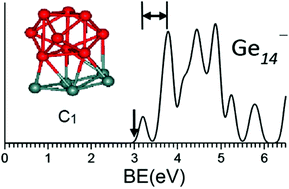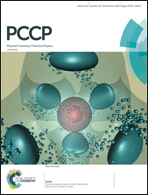Predicting the structural evolution of Gen− (3 ≤ n ≤ 20) clusters: an anion photoelectron spectroscopy simulation†
Abstract
Spectroscopic evidence for the structural evolution of Gen− (3 ≤ n ≤ 20) clusters is provided by means of simulated anion photoelectron spectra (PES). Both adiabatic detachment energies and HOMO–LUMO gaps of the selected low-lying candidates match well with those measured in experiment. This work demonstrates that PES is a highly sensitive technique for probing both electronic and geometric structures of atomic clusters, whose structural evolution is an elemental signature with characteristic features.



 Please wait while we load your content...
Please wait while we load your content...